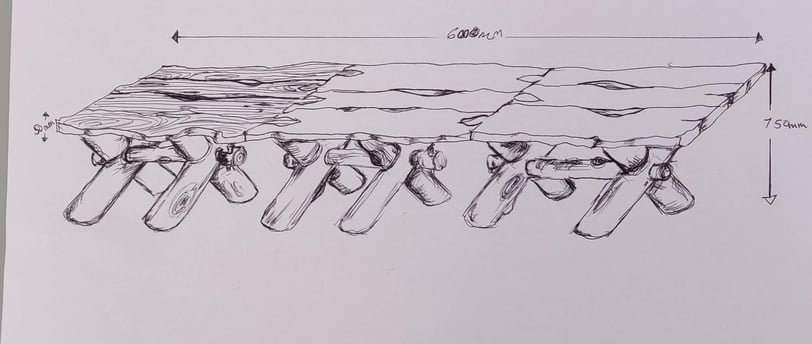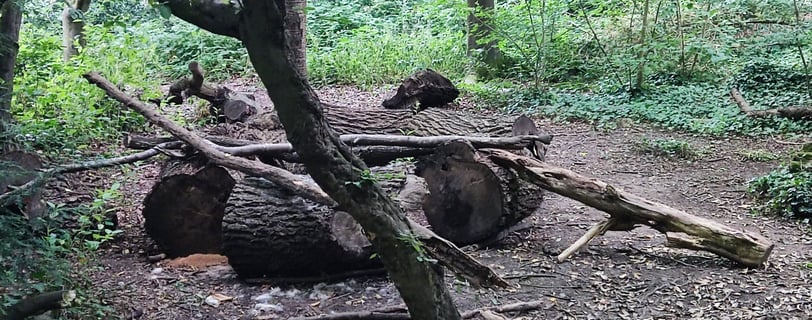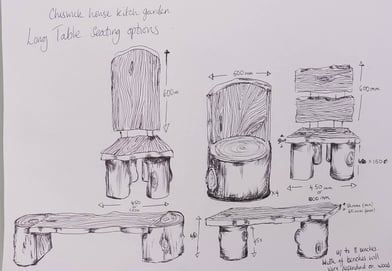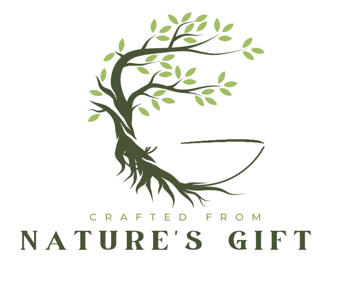The Creative Process: From Idea to Design
Discover how we transform our ideas into tangible designs through a structured creative process. Explore the journey from concept to creation, how ideas changed and what influenced decision making.
8/1/20244 min read


In January 2024, I applied to Chiswick House’s open call for artists to create a communal long table, inspired by the theme “What is Food.” The table, would be generously funded by Arts Council England and designed in collaboration with Kitchen Gardeners and community partners, would be around 2 meters long and serve as the centrepiece of their Kitchen Garden. It would become a focal point for activities, conversations, and events revolving around food.
Our vision for the table was clear—it would reflect our connection to food by using reclaimed materials and ceramics. When our proposal was accepted, we were thrilled. We immediately began searching for salvaged wood, considering everything from cable drums and sleepers to pallets. The goal was to find materials we could sustainably transform into a table.




However, on our first visit to the site, something felt off. Mark, one of my collaborators, simply shook his head. I couldn’t figure out why at first. The space was beautiful and vast, but as I looked closer, I realized that a 2-meter-long table would look far too small. It would feel more like a dining table rather than the grand, communal table we had envisioned. We needed to think bigger—at least three times bigger. The table needed to be around 6 meters long to truly have an impact in that space.
At our first meeting, we were introduced to Rosie, the Head Gardener, as well as George and Aron, who manage the estate’s trees. George would be our main contact during the project. We were shown the reclaimed wood they had in their yard, but given that the table now needed to be much larger, there wasn’t enough to meet our needs. To our surprise, George led us outside the yard to show us something unexpected—fallen trees.
Could we use fallen trees to build this massive table?
It was a lot to consider. Could we really create a 6-meter table in just over two months using raw, fallen trees? Despite the challenge, we were excited and ready to dive in.
Over the next few weeks, we hunted for suitable trees. Designing the table couldn't begin until we knew exactly what materials we had to work with. Our idea was to reflect the diversity of the estate’s landscape by using all the available species of wood to create the table and benches.
Because the lengths of the wood varied, we decided to break the table into three parts, each about 2 meters long, which would be joined together decoratively to form the full 6-meter piece.
We started with a selection of different types of wood: Cedar, Yew, Ash, Holly, Sweet Chestnut, Redwood
Working with green wood—wood that hadn’t fully dried—meant we had to adapt to nature’s timeline. While we had initially planned to involve the Chiswick House community in the table’s co-design process, it became clear that working with fallen trees meant we had to let nature guide us. Instead of selecting from multiple design options, we would need to respect the natural properties of the wood and let it dictate what was possible.
Our focus shifted to ensuring the table was safe, durable, and structurally sound, while still leaving room for the community to contribute to the aesthetic and decorative ceramic elements.




Here are the key details of the table’s construction:
Table height: 750mm
Table length: 6 meters
Table depth: 1 meter
Benches: Seat height of 450mm, with legs made from logs over 300mm in diameter
To ensure durability, we decided on mechanical fixings rather than glue, and exterior-grade fixings would anchor the table top. Cross braces would be used to secure the top from both above and below, while various woodworking techniques would be applied to account for the different species of wood. This would help manage the variations in wood density, grain, and how each type expands and contracts.
The entire structure will sit on shingles to allow for proper water drainage, prolonging the table’s life. The logs will be cut on-site and then transported to our workshop for further refinement and assembly.
As for the ceramics this is were I felt the community could really get involved and leave their mark. although like wood clay has natural limits and likes to be worked with in certain ways it is accessible and allows for creativity and expression in a variety of ways. I am excited to see what the community inspire me to create and what they create to leave there mark on the table and the Kitchen Garden. The final construction is set to begin on August 16th on-site.
Ultimately, this table will be more than just a piece of furniture. It will symbolise the essence of the Kitchen Garden—a gathering point to explore, learn, share food, and tell stories. It’s a celebration of community, unity, sustainability, and the rich tapestry of human connection. I also symbolises a respect for nature and the gifts it gives.
We look forward to sharing the rest of this journey with you as we start to build .


Nature, Artistry, Sustainability
Transforming nature into beautiful, functional creations.
Harvesting Connections
ayeshaweekes@gmail.com
07958487488
© 2024. All rights reserved.
